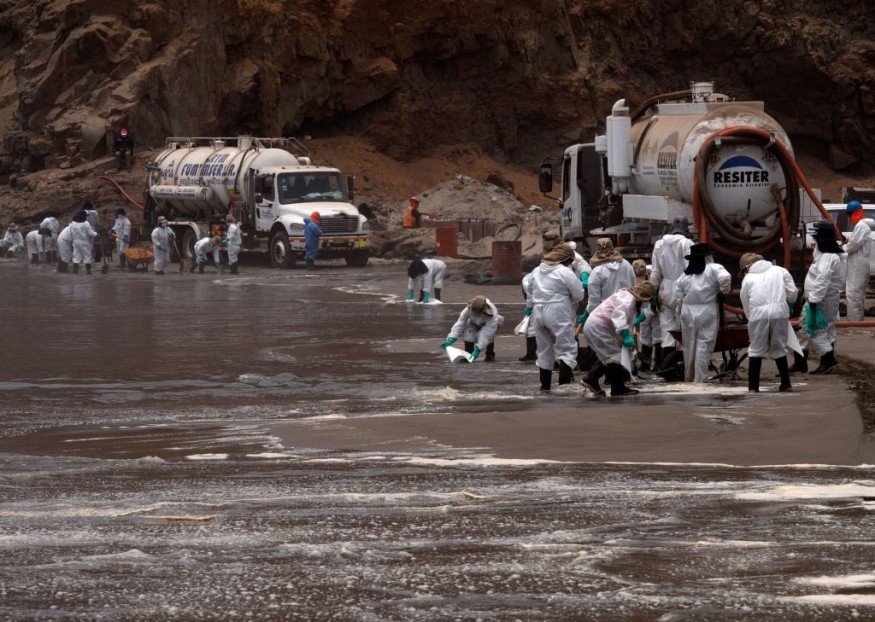Scientists are concerned due to the environmental damage caused by the oil spill off the coast of Peru more than a month ago.
They called on the Peruvian government to stop its reliance on oil and demanded that Peru consider an alternative energy source in the future.
On Jan. 15, an oil spill occurred in the Pacific Ocean near off the coast of Callao District, just north of the capital city of Lima. Also called the 2022 Callao oil spill¸ the incident has been considered one of the greatest marine ecological disasters in history.
The oil spill spanned not only off the coast of Callao but also reached other beaches in the coastal areas of Peru.
After the incident, the cause of the spill was blamed on the Tonga volcanic eruption that day.
However, both Peruvian authorities and international organizations have condemned the incident.
The initial investigation is still ongoing, highlighting that human error and not natural causes be the driving factor that led to the oil spill on Jan. 15.
Environmental Damage Had Scientists Concerned

The oil spill off the coast of Peru on Jan. 15 covered almost everything, including crabs, rocks, and seaweed, unlike anything seen before, according to Deyvis Huaman, a conservation biologist of Peru's National Service of Natural Areas Protected by the State (SERNANP), as cited by the Nature website.
Scientists have joined with local authorities in assessing the overall damage of the oil spill and cleanup efforts in coastal areas.
The spill has spread to over 20 beaches-covering more than 41 kilometers (25 miles) starting off the coast of Callao, as per OLT News.
Due to the environmental damage caused by the 2022 Callao oil spill, scientists are calling the possibility that the Peruvian government stop its reliance on oil and find an alternative source of energy.
Oil spills are common across Peru, especially near the northern districts and Amazon jungle.
However, Huaman emphasized that the Jan. 15 oil spill is the most damaging event concerning pollution on marine waters and the largest near the capital.
Also read: Peru Suffers From Disastrous Oil Spill, Declares Environmental Emergency to Protect Birds
Oil Spill Linked with the Tonga Volcanic Eruption
On the day of the incident, Peru witnessed the spillage of 11,900 barrels of oil from the La Pampilla refinery-operated by the Spanish oil company Repsol.
The Spanish firm reportedly attributed the incident to be caused by the Tonga volcanic eruption on the same day, as per the La Prensa Latina media agency.
The firm's claim went out after receiving heavy criticism from Peruvian authorities.
However, Repsol reportedly specified that wave surges from the Tonga eruption caused the turnover of its tanker, which was pumping crude oil from the refinery at that time.
Local and International Investigations
The General Directorate of Captaincies and Coast Guard, Peru's National Maritime Authority, is reportedly continuing the investigation into the oil spill incident.
In addition, international organizations have joined the investigation as damage assessment and cleanup efforts continue along Peruvian coasts.
An international team consisting of experts from the United Nations (UN) has been sent on the ground since January.
Peru, being an agricultural country rich with both land and maritime resources, is facing the environmental repercussions of the oil spill-with the country's local wildlife and fishing industry at stake.
© 2025 NatureWorldNews.com All rights reserved. Do not reproduce without permission.





